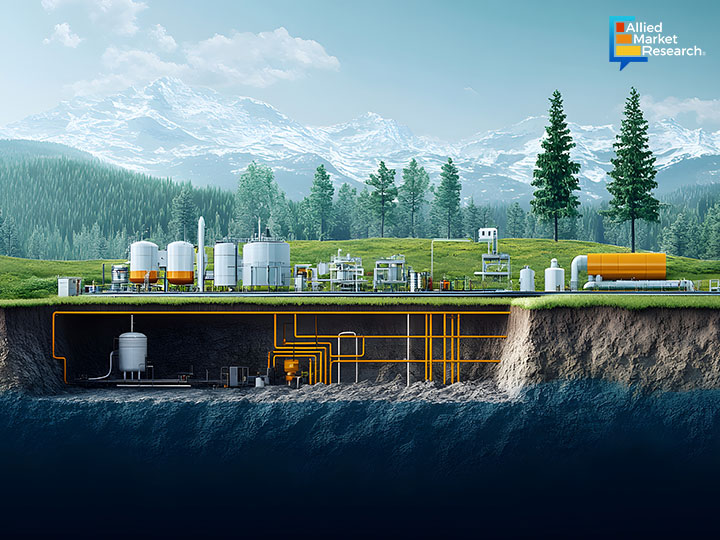Understanding Carbon Capture and Sequestration: What Businesses Need to Know

3 Jul
2025
Highlights:
- Introduction
- CCS captures and stores COâ‚‚
- It needs planning and community trust
Carbon Capture and Sequestration (CCS) is a technology that has gained significant attention in the last few years, especially among industries with large emissions. For companies in energy, manufacturing, cement, and even agriculture, understanding how CCS works is no longer optional; it is becoming part of the operational discussion. While many are still debating its long-term effects or adoption levels, the process itself and its ongoing developments are already influencing business decisions.
How the process works and why it matters
The CCS process is quite simple. Carbon dioxide released from industrial activities is captured at the source, like power plants, refineries, or factories, before it can enter the atmosphere. Once captured, the COâ‚‚ is compressed and transported, usually through pipelines, and then stored deep underground in geological formations. These storage sites are often depleted oil and gas reservoirs or deep saline aquifers.
This entire process requires coordination between various systems, including capturing equipment, transport infrastructure, and secure storage sites. From a technical point of view, one of the biggest challenges lies in making the capture stage efficient and affordable. Businesses investing in CCS technology often face high costs, but ongoing research and pilot projects are working to bring those costs down. There’s also the matter of reliability. The storage needs to be safe and long-lasting, which demands strong monitoring and management strategies.
For companies, CCS is more than just a sustainability requirement. It can affect everything from compliance requirements to operational expenses. In some industries, installing a carbon capture system can mean redesigning core production processes. In others, it, sometimes, requires partnerships with external capture and storage providers.
Concerns from communities and transparency issues
Recent events show that CCS is not just a technical matter but also a community one. In Central Louisiana (Cenla), a group of pastors announced a community meeting to discuss their concerns about a proposed carbon capture project in their area. The issue wasn't just about emissions; it was about safety, land use, and transparency. Many residents felt they had not received enough information and were unsure how COâ‚‚ pipelines and underground storage might affect their surroundings.
This reflects a broader concern that many businesses can face when dealing with CCS. Local communities, especially those near industrial sites, often seek clear communication and involvement in decision-making. While companies may focus on engineering and financial planning, public trust is equally important. If a business is planning to integrate CCS into its operations, engaging with the local population early and frequently can be a key step in preventing resistance or delays. According to Allied Market Research, the carbon capture and sequestration industry contributed to $3.7 billion in 2024 and is expected to reach $6.6 billion by 2034, citing a CAGR of 5.8% during 2025-2034.
Recent developments and industry attention
There has been a rise in interest and investment in CCS technology. According to an article by MSN, multiple governments and companies have started investing heavily in research and implementation. The U.S. government, for example, has offered funding support to several CCS projects, hoping to reduce emissions from large-scale sources like power plants. Major energy companies have also started pilot initiatives and collaborations to explore how best to integrate CCS with existing infrastructure.
While these developments do not guarantee widespread adoption, they do show a change in industry behavior. Companies are beginning to treat CCS as part of their long-term planning rather than a distant option. From a business perspective, this means that knowing how to assess CCS providers, measure risks, and understand regulatory frameworks is becoming essential. There’s also growing interest in carbon utilization, where the captured CO₂ is not just stored, but turned into products like fuels, chemicals, or construction materials.
However, it's important to remember that CCS does not reduce carbon production. It only deals with emissions that have already been created. For this reason, many experts say CCS should not be viewed as a complete solution but as one tool among many in managing industrial emissions. Businesses need to consider this when weighing its costs and benefits.
Balancing investment, risk, and responsibility
Choosing to implement CCS technology involves a combination of business judgment and environmental responsibility. For companies in heavy industries, ignoring is likely not an option in the long run, especially as pressure builds from regulators, investors, and consumers. Still, adopting CCS without proper planning can lead to high costs, technical issues, or even public backlash.
The first step for any business should be a clear internal assessment. What emissions sources are most significant? Can capture be integrated into current systems without major disruption? Is there a trustworthy partner for transport and storage? How are stakeholders, both internal and external, likely to react to this shift?
Additionally, companies should monitor emerging legal and financial frameworks around CCS. Regulations are expected to decide what’s allowed, where CO₂ can go, and what reports companies need to provide. Insurance, responsibility, and approvals are likely to get more detailed. Since one solution cannot work for every industry, businesses should find what fits their specific needs.
Final Words
Carbon capture and sequestration is no longer a distant concept; it’s a working technology already being used and debated today. For industrial businesses, it holds the potential to manage emissions in a way that supports growing demands for sustainability and responsibility. But it also brings new challenges, from technical execution to community relations. Understanding the system in full, like how it works, where it’s going, and how others are responding, can help businesses make informed decisions.
Contact our experts to learn more about the evolving trends in the carbon capture and sequestration industry.

Koyel Ghosh
Author’s Bio- Koyel Ghosh is a blogger with a strong passion and enjoys writing in miscellaneous domains, as she believes it lets her explore a wide variety of niches. She has an innate interest in creativity and enjoys experimenting with different writing styles. A writer who never stops imagining, she has been serving the corporate industry for the last five years.
Avenue: Entire Library membership of Allied Market Research Reports at your disposal
- Avenue is an innovative subscription-based online report database.
- Avail an online access to the entire library of syndicated reports on more than 2,000 niche industries and company profiles on more than 12,000 firms across 11 domains.
- A cost-effective model tailored for entrepreneurs, investors, and students & researchers at universities.
- Request customizations, suggest new reports, and avail analyst support as per your requirements.
- Get an access to the library of reports at any time from any device and anywhere.
Related Post
-
How are Submarine Cables Transforming Global Connectivity with Enhanced User Experience?
-
Endoscopy Procedures: Transformations in Techniques and Applications
-
AI-Powered Video Analytics: How the Product Actually Works for enterprises
-
Painting Robots: Transforming Precision Coating and Creative Applications
-
Innovations in Pharmacovigilance Systems Advancing Patient Safety
-
Understanding Edge Security: Keeping Data Safe Near the Source
-
Exploring the Use and Advancements of 3D Laser Scanners in Professional Applications
-
Reinforcing Industrial Controls with Smarter Tools and Training








